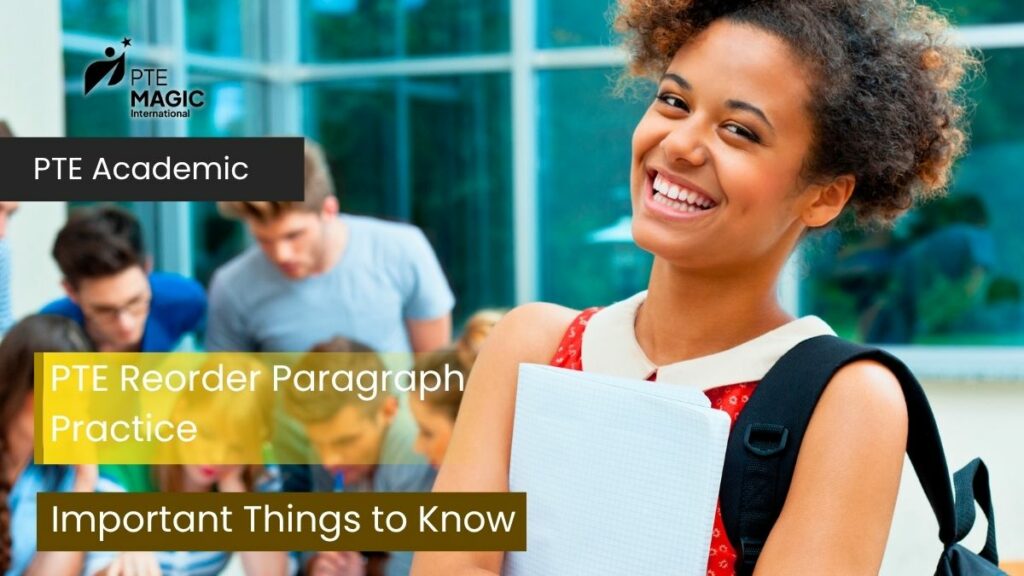No courses in the enrolment list.
In this PTE Reorder Paragraph task, you will be presented with several text boxes that appear in a jumbled or random order.
Each set of text boxes together will contain no more than 150 words in total.
Your job here is to rearrange these boxes so that they form a logical and coherent paragraph.
There are two ways to do this:
- First, you can click on a text box to highlight it (a blue border will appear), then hold down the left mouse button and drag the box to the desired position.
- Alternatively, after selecting a box, you can use the left and right arrow buttons on the screen to shift its position horizontally.
To cancel a selection, simply select anywhere else on the screen to deselect the highlighted box.
Sample: The text boxes in the left panel have been placed in a random order. Restore the original order by dragging the text boxes from the left panel to the right panel.
A. Developing computational thinking helps students to better understand the world around them.
B. After all, some experts say coding is one of the human skills that will become obsolete as artificial intelligence grows.
C. So is it necessary for children to learn how to program computers?
D. Many of us happily drive a car without understanding what goes on under the bonnet.
E. Nevertheless, governments believe coding is an essential skill.
Answer: A-D-C-B-E
Sign up for more FREE practice
5 Common Mistakes in PTE Reorder Paragraph Practice

Reordering Without Reading All Sentences First
Rushing into moving the boxes results in poorly structured paragraphs since you don’t understand how the entire set connects.
Hence, you should take a few extra seconds at the start to read every single sentence and understand the gist of each.
After that, mentally group them into: possible opening sentences, arguments, conclusion, or transition.
Only after this should you start dragging the boxes.
Make this step a required habit every time you attempt a new practice set!
Placing Examples Before The Main Idea
Examples are meant to illustrate the main point (which should have already been introduced).
If the main idea hasn’t been established, the example feels random and out of place!
So, after scanning the sentences, you must identify which one introduces a general topic.
It’s often a sentence with no reference words, no examples, and a broad tone.
Once you have identified it, treat it as a potential topic sentence and place it at the beginning.
Then, test whether other sentences naturally follow it as evidence or examples.
Guessing Based on Topic Familiarity Instead of Structure
Many test-takers try to reorder sentences based on what they already know about the topic, especially when it’s familiar.
That is a huge mistake because the goal is not to recall information but to understand how ideas are connected within the passage itself.
So, you must completely ignore outside knowledge (everything you personally know about the subject matter).
Instead, treat every sentence as a puzzle piece that must fit logically with the others, and keep your focus strictly on internal textural cues.
Ignoring Logical Connectors and Pronoun References
One major mistake is overlooking small but crucial words like “however,” “this,” “that,” “such,” or “they,” which indicate a clear reference point.
That way, you can be 100% sure the sentence containing them never logically starts any completely new argument!
So, during practice, you should train yourself to immediately identify these linking words and mentally flag that sentence as dependent.
Then, look for another sentence in the set that introduces the person, idea, or situation that this sentence refers to.
You can also use simple logic to rule out options quickly:
- For example, the word “this” usually points to an object, idea, or situation (not a person).
- Likewise, “they” must refer to more than one thing, so it can’t come right after a sentence that only mentions a single person or item.
Pairing Sentences Based on Similar Vocabulary
Many assume that two sentences should go together simply because they share repeated words or phrases.
For example, if two sentences both mention “technology,” you might assume they are adjacent, but that isn’t always the case!
As discussed earlier, you must examine how the ideas in each sentence relate to one another instead of relying solely on keywords.
Always ask yourself this important question: Does the second sentence explain, expand on, give an example of, or contrast the first one?
If necessary, try reading the two sentences out loud together to see whether something feels off or abrupt.
Frequently Asked Questions
How many sentences usually appear in the Reorder Paragraph task?
Typically, each Reorder Paragraph set contains 3 to 5 sentences (most commonly, you will see 4).
Do all sentence orders in a set contribute equally to the score?
Not exactly.
PTE uses partial scoring for this task, meaning you get credit for every pair of sentences that are placed correctly next to each other in the right order.
So even if you don’t get the full sequence perfect, you can still score points for correct links between pairs.
Are grammar and vocabulary important when reordering sentences?
Yes, but not in the way you might think.
Here, you are not being tested on your ability to use grammar or vocabulary, but rather your ability to recognize how they function in context.
Can I move the same sentence multiple times during the test?
Absolutely; you can rearrange and shuffle the boxes as much as you like.
The system only records your final arrangement when you click “Next.”
Is there only one correct order for each question?
Yes, there is always just one fixed correct sequence that reflects the original, logical paragraph structure.
Even if another order seems to make sense, it won’t be accepted.
Last updated on 02/06/2025

My name is Moni, and I am a seasoned PTE teacher with over 6 years of experience. I have helped thousands of students overcome their struggles and achieve their desired scores. My passion for teaching and dedication to my student’s success drives me to continually improve my teaching methods and provide the best possible support. Join me on this journey toward PTE success!


























I am a firm believer that the best teachers educate with their hearts not just their minds.
Moni | PTE MAGIC International Founder
Explore PTE
Tips & Tricks
In this task, you are required to read a passage (up to 300 words). After...
Read more →For this PTE Reading Multiple Choice Multiple Answer task, you must read a short passage...
Read more →You’ll see a text with missing words in the PTE Reading Fill In The Blanks...
Read more →